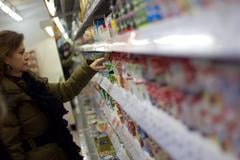This piece has been replaced with a story written by the Spectator’s staff.
“I cannot accept that in some parts of Europe, in central and eastern Europe, people are sold food of lower quality than in other countries, despite the packaging and branding being identical,” said European Commission President Jean-Claude Juncker in his latest State of the Union speech.
He was referring to the dual quality of products sold across the European Union. Some of the newer member states, including Slovakia, have been pointing at this problem for years.
The phenomenon has been confirmed by several tests carried out across the countries. Up to one-third of EU countries struggle with the problem, according to the Slovak agriculture minister. Most recently, Slovakia has completed a second round of testing, confirming that the situation has not improved much. Out of 33 tested products bought in Slovakia and Austria, nearly one half was different.

“The results were even worse than in the first round,” said Jozef Bíreš, head of the State Veterinary and Food Administration (ŠVPS).
If the producers do not change their approach, politicians are ready to adopt legislative changes. Before they start discussions, they want to wait for the results of the summit on the dual quality of products that will take place in Bratislava on October 13.
The sale is demeaning
The first testing was carried out in late 2016. Out of 22 foodstuffs sold in retail chains in Slovakia (specifically in Bratislava) and Austria (in the border towns of Kittsee and Hainburg), 14 displayed significant differences in their ingredients.
This time, the ŠPVS compared the foodstuffs bought in shops in Bratislava and Senec with those purchased in Vienna. The foodstuffs were selected from various categories and included dairy products, meat, fish, bakery, beverages, sweets, cereals and fruits.



 The price of 400 food products has been capped by eight retailers. (source: Sme)
The price of 400 food products has been capped by eight retailers. (source: Sme)